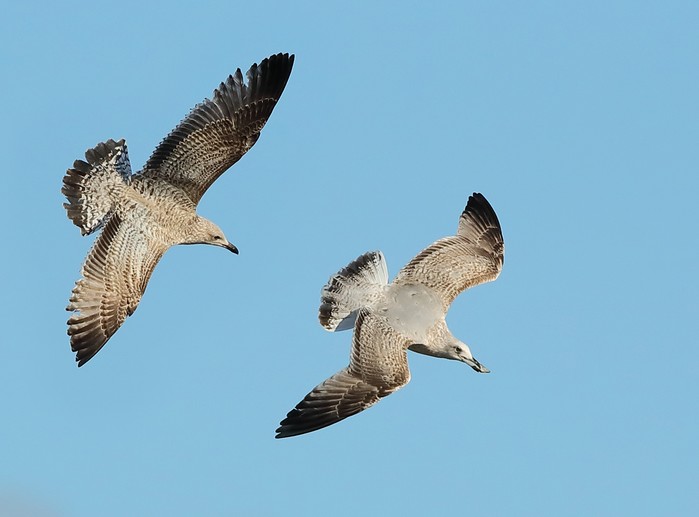Flying Blind: Why Gulls May Not See What’s Coming
New research reveals that visual field blind spots put gulls at risk of fatal collisions with turbines and power lines.

In the ever-shifting skies above sea and shore, gulls have long been masters of their domain. But a new study, published in Ibis, suggests that their evolutionary prowess in foraging may carry a hidden vulnerability: they might be flying blind - quite literally - into the path of danger.
Researchers Jennifer Cantlay, Steven Portugal, and Graham Martin meticulously examined the visual field configurations of three gull species: the European Herring Gull, Lesser Black-backed Gull, and Black-legged Kittiwake. Their findings confirm that these species possess the visual field traits expected of visually guided foragers - narrow, vertically elongated binocular fields ideal for precision prey capture.
However, the research reveals an unsuspected trade-off: a blind area above and slightly ahead of the birds' line of sight, especially prominent when they pitch their heads forward in flight to scan the surface below. In this posture - common during foraging - gulls may become temporarily blind in the direction they are flying. This anatomical arrangement may explain the high incidence of collisions with human-made structures such as wind turbines and power lines.
This visual blind spot is not unique to gulls. Other species, including vultures and cranes, have also been found to suffer from similar vulnerabilities due to their visual field arrangements. But the case for gulls is especially compelling given their frequent interactions with human infrastructure - particularly offshore wind farms.
What sets this study apart is its integration of field observations with experimental visual field mapping. The team confirmed that the positioning of the gulls' binocular vision does not reach high enough above the bill to eliminate the forward blind zone. In some cases, photos of birds in flight show their gaze directed 45 degrees downward, effectively rendering the path ahead invisible.
Interestingly, skimmers - relatives within the Laridae family - show a comparable frontal blind area when foraging close to the water’s surface. While their low-altitude flight reduces the likelihood of mid-air collisions, gulls cruise at elevations that intersect with turbines and other structures, making their visual blind zone far more perilous.
The implications of this research are sobering for conservationists. Gulls are already considered among the most at-risk species for wind turbine collisions. As efforts to mark turbine blades for increased visibility are trialled, this study raises the possibility that even conspicuous obstacles may go unnoticed by birds with blind spots oriented in the direction of travel.
Mitigation, the authors suggest, may lie not only in improving obstacle visibility but also in better understanding how visual fields interact with behaviour. For instance, positioning turbines away from key foraging grounds or adjusting blade movement patterns could help reduce risk. Yet, such changes must be balanced against broader ecological concerns, including displacement from valuable habitats.
This study offers a compelling glimpse into the sensory ecology of gulls, illustrating how adaptations that aid survival in one domain may imperil it in another. For the naturalist, it is a reminder that even the most familiar birds harbour hidden complexities - evolutionary compromises shaped as much by their skies as by their prey.
21 Mar 2025
Share this story







